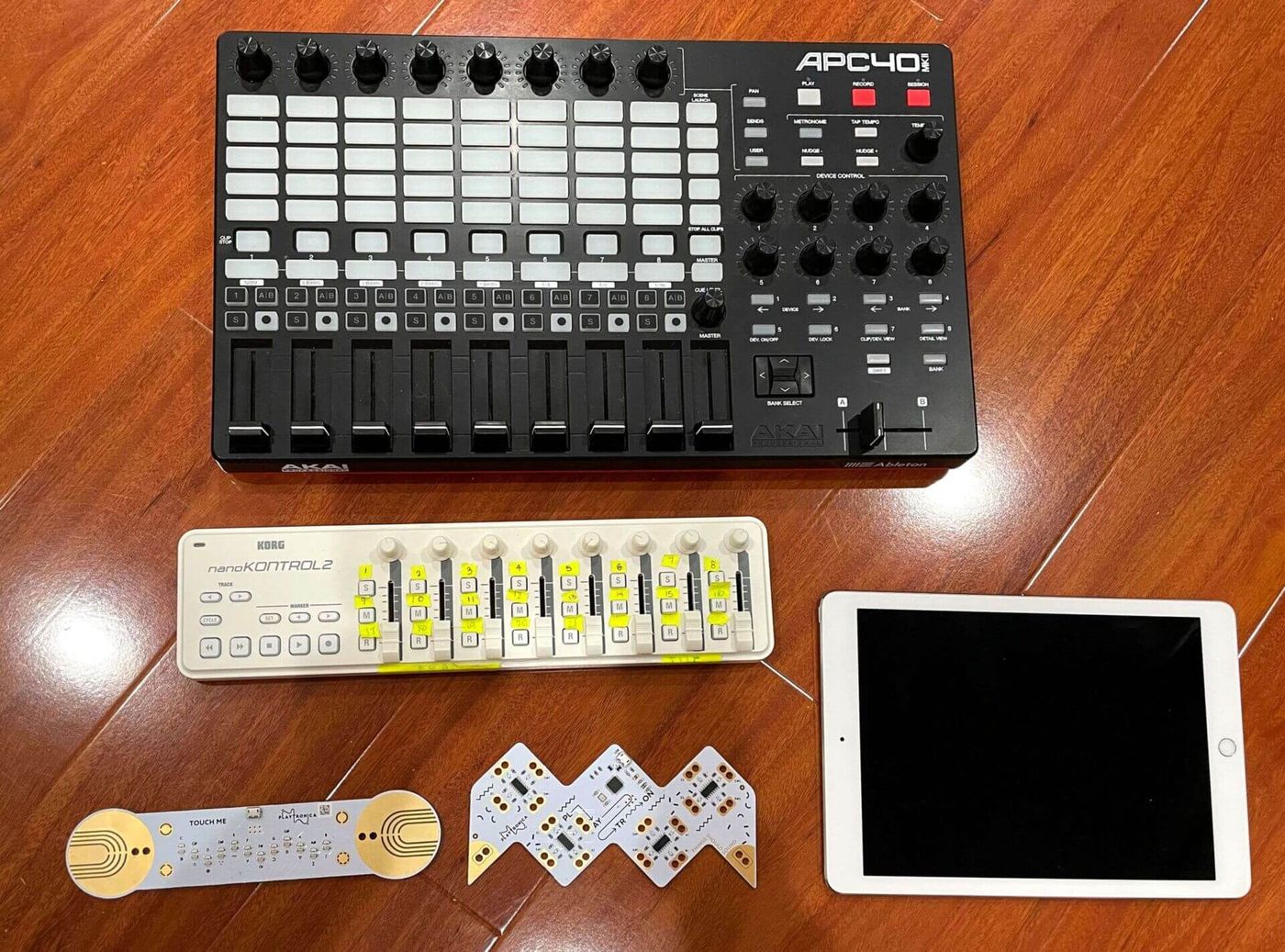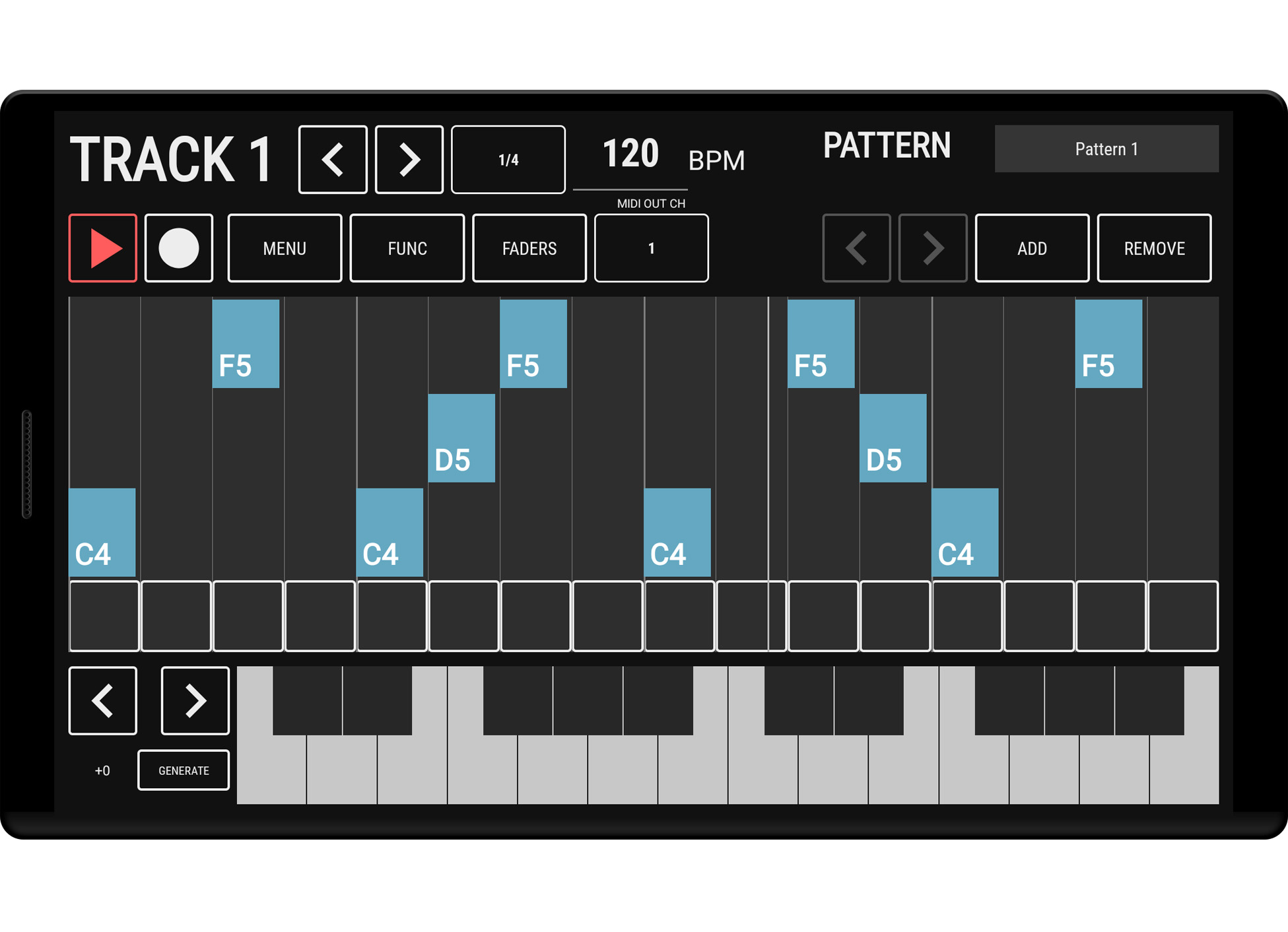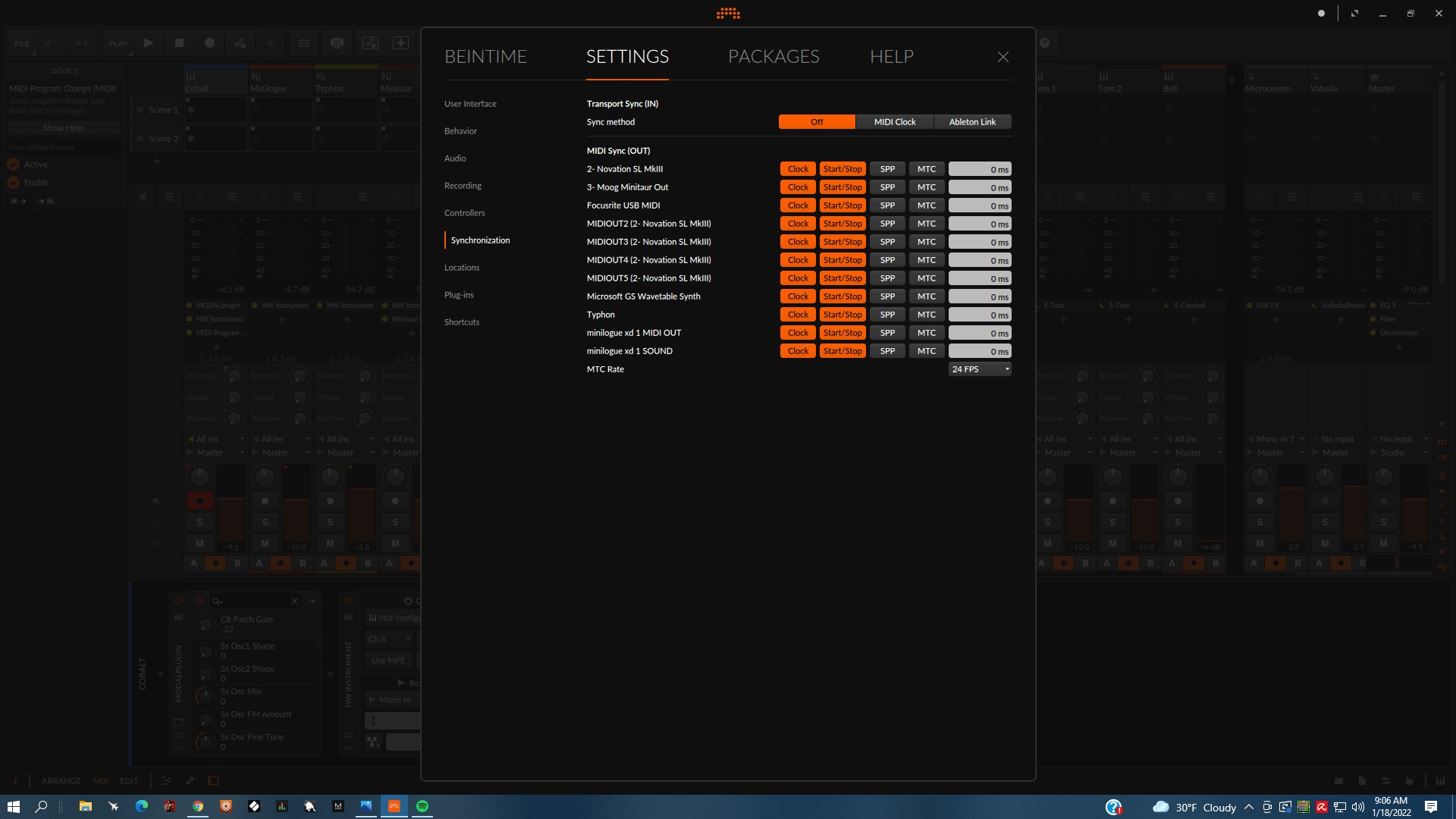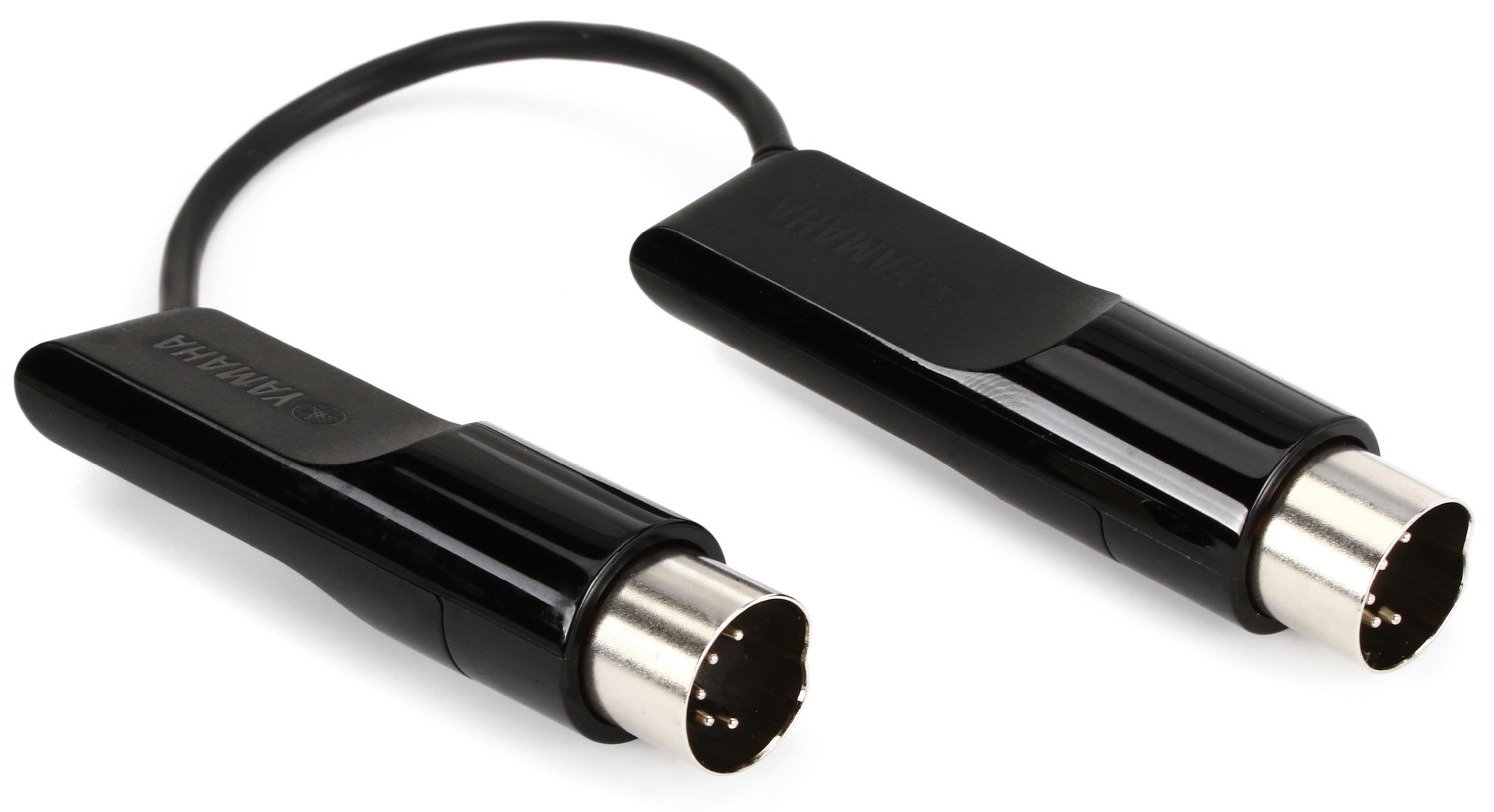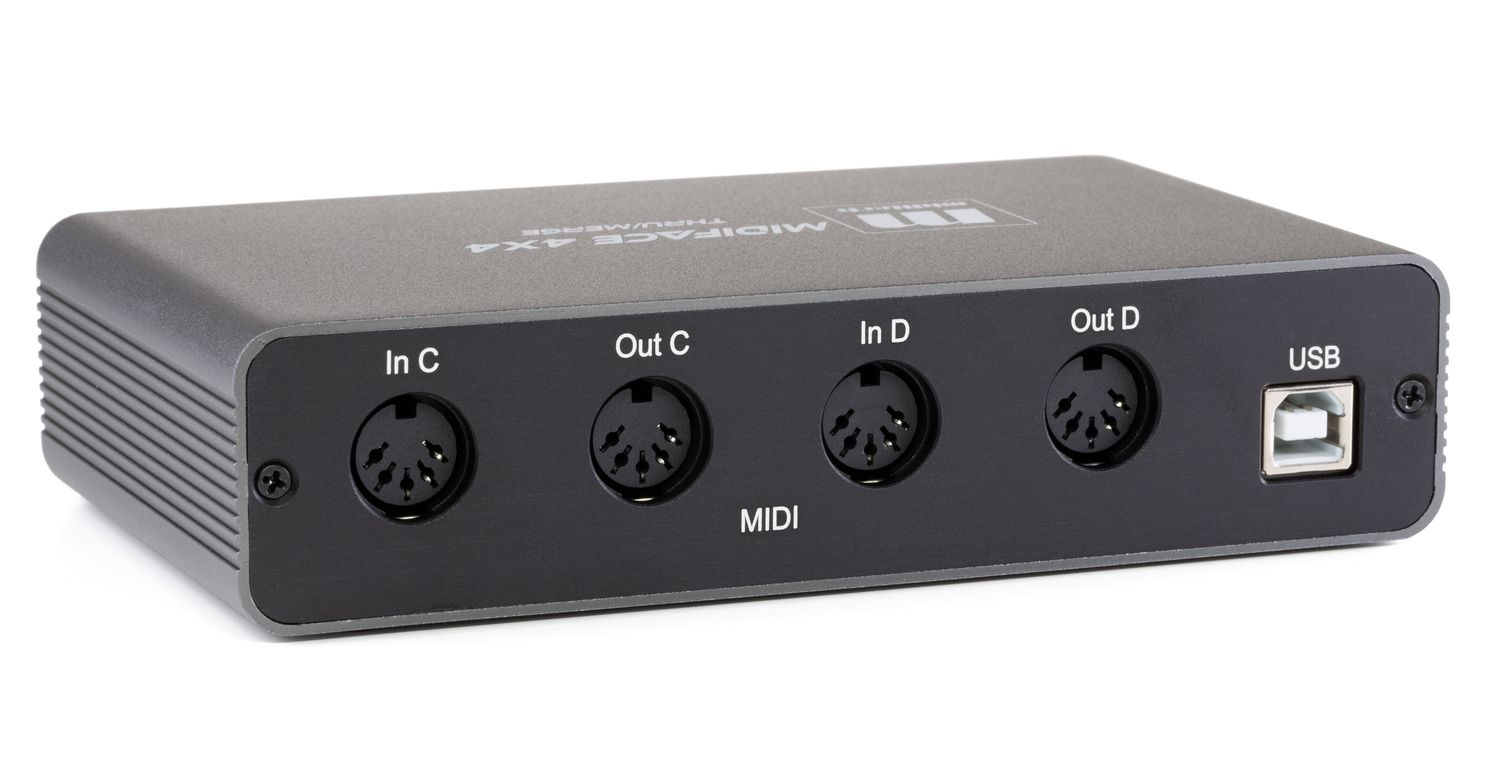Home>Production & Technology>MIDI>What Is Aftertouch In MIDI


MIDI
What Is Aftertouch In MIDI
Modified: February 22, 2024
Learn about the significance of aftertouch in MIDI technology and its impact on music production. Explore the potential of MIDI aftertouch for enhanced musical expression. Gain insights into MIDI aftertouch and its applications.
(Many of the links in this article redirect to a specific reviewed product. Your purchase of these products through affiliate links helps to generate commission for AudioLover.com, at no extra cost. Learn more)
Table of Contents
Introduction
When it comes to crafting musical masterpieces in the digital realm, MIDI (Musical Instrument Digital Interface) plays a pivotal role. MIDI technology enables musicians and producers to control and manipulate various aspects of sound, allowing for unparalleled creativity and expression. One of the key features that adds depth and nuance to MIDI performance is aftertouch.
Aftertouch, also known as pressure sensitivity, is a dynamic MIDI control parameter that responds to the amount of pressure applied to a key or pad after it has been struck. This subtle yet powerful feature allows musicians to infuse their performances with a level of expressiveness that was previously unattainable in the realm of electronic music.
In the world of MIDI, aftertouch serves as a bridge between the physical act of playing an instrument and the nuanced manipulation of sound. By varying the pressure applied to a key or pad, musicians can modulate parameters such as volume, pitch, filter cutoff, and more, adding a layer of human-like articulation to their performances.
In this comprehensive exploration of aftertouch in MIDI, we will delve into its definition, the various types of aftertouch, its practical applications in music production, and its integration into MIDI controllers and keyboards. Whether you're a seasoned producer looking to expand your sonic palette or a budding musician eager to understand the intricacies of MIDI technology, this guide will illuminate the captivating world of aftertouch and its profound impact on modern music creation.
Definition of Aftertouch in MIDI
Aftertouch, also referred to as pressure sensitivity, is a fundamental aspect of MIDI technology that enables musicians to impart additional expression and dynamics to their performances. When a key on a MIDI controller or keyboard is struck, aftertouch allows the player to apply varying degrees of pressure to the key after it has been depressed, resulting in the generation of MIDI data that can be utilized to control and modulate specific parameters in a musical composition.
The essence of aftertouch lies in its ability to capture the subtle nuances of a musician's touch, translating the physical interaction between the performer and the instrument into a rich tapestry of musical articulation. This dynamic control parameter empowers musicians to infuse their performances with a level of expressiveness and emotion that transcends the binary nature of traditional MIDI note data.
In practical terms, aftertouch data can be utilized to manipulate a wide array of musical elements, including but not limited to volume, vibrato, filter cutoff, and modulation depth. By adjusting the pressure applied to the keys or pads, musicians can create organic swells, add vibrancy to sustained notes, and introduce intricate tonal variations, thereby imbuing their performances with a captivating sense of realism and depth.
Furthermore, aftertouch is not limited to traditional keyboard instruments; it is also integrated into MIDI controllers and electronic drum pads, offering a versatile means of articulation across a spectrum of musical contexts. This adaptability underscores the pervasive impact of aftertouch in shaping the expressive capabilities of modern electronic music production.
In essence, aftertouch in MIDI represents a profound convergence of human touch and technological innovation, enabling musicians to transcend the confines of static note data and imbue their performances with a dynamic and emotive quality that resonates with listeners on a profound level. As such, it stands as a testament to the enduring power of MIDI technology in fostering boundless creativity and artistic expression in the realm of music production.
Types of Aftertouch
Channel Pressure (Mono Aftertouch)
Channel Pressure, also known as Mono Aftertouch, is a type of aftertouch that applies the same amount of pressure to all notes being played simultaneously. When a musician exerts pressure on any key after it has been struck, the resulting aftertouch data is transmitted uniformly to all active notes within the MIDI channel. This uniform pressure modulation enables a cohesive and synchronized manipulation of musical parameters across the entire performance, allowing for nuanced control over elements such as volume, vibrato, and filter cutoff on a global scale.
Polyphonic Aftertouch
Polyphonic Aftertouch represents a significant evolution in aftertouch technology, offering a more sophisticated and expressive form of pressure sensitivity. Unlike Channel Pressure, Polyphonic Aftertouch enables individual control over the aftertouch effect for each note being played. This means that a musician can apply varying degrees of pressure to different keys, resulting in nuanced and independent modulation of parameters for each note within a chord or melody. This level of granularity empowers musicians to imbue their performances with a heightened sense of musical articulation and emotive expression, as each note can be dynamically shaped and sculpted in a distinct manner.
Channel Rotation (Multi-dimensional Aftertouch)
Channel Rotation, also known as Multi-dimensional Aftertouch, represents the pinnacle of aftertouch sophistication, introducing a multi-dimensional approach to pressure sensitivity. In addition to capturing the amount of pressure applied to the keys, Channel Rotation aftertouch also records the lateral movement or rotation of the keys, providing an unprecedented level of expressive control. This multi-dimensional data can be harnessed to manipulate a diverse range of musical parameters, including pitch bend, modulation, and spatial effects, offering a holistic and immersive means of shaping and embellishing musical performances.
In summary, the evolution of aftertouch technology has ushered in a new era of expressive potential for musicians and producers, allowing for nuanced and dynamic control over musical elements. Whether through the uniform pressure modulation of Channel Pressure, the individualized expressiveness of Polyphonic Aftertouch, or the multi-dimensional articulation of Channel Rotation, aftertouch in its various forms stands as a testament to the profound impact of MIDI technology in shaping the landscape of modern music production.
How Aftertouch is Used in Music Production
Aftertouch serves as a versatile and powerful tool in the arsenal of music producers, offering a myriad of creative possibilities and expressive potential. Its utilization extends across various facets of music production, enriching compositions and performances with nuanced articulation and emotive depth.
In the realm of electronic music, aftertouch enables producers to infuse their compositions with a sense of organic dynamism and human-like expressiveness. By leveraging aftertouch data, musicians can introduce subtle variations in volume, adding a sense of ebb and flow to their sonic creations. This dynamic control over volume modulation allows for the creation of evocative swells and fades, imbuing the music with a sense of movement and vitality.
Furthermore, aftertouch plays a pivotal role in shaping the tonal characteristics of musical passages. Through pressure-sensitive manipulation of filter cutoff parameters, musicians can sculpt the timbral texture of their compositions, introducing sweeping tonal shifts and dynamic tonal articulations. This capability lends a rich and evolving sonic quality to the music, enhancing its emotive resonance and textural complexity.
In the realm of live performances, aftertouch empowers musicians to imbue their playing with a heightened sense of expressiveness and individuality. Whether delivering a captivating piano solo or unleashing a searing synth lead, aftertouch enables performers to introduce subtle pitch modulations and expressive vibrato, elevating their performances to new heights of emotive impact and musicality.
Moreover, in the context of orchestral arrangements and cinematic compositions, aftertouch facilitates the creation of nuanced and evocative musical landscapes. By modulating parameters such as tremolo depth and vibrato intensity, composers can imbue their orchestral scores with a sense of human-like phrasing and emotive nuance, eliciting profound emotional responses from listeners.
In summary, the utilization of aftertouch in music production transcends mere technical functionality, evolving into a potent means of infusing compositions and performances with a profound sense of human-like expressiveness and emotive depth. Its application spans across genres and musical contexts, enriching the sonic tapestry of modern music production with a captivating sense of dynamism and artistry.
Aftertouch in MIDI Controllers
Aftertouch functionality in MIDI controllers represents a pivotal dimension of expressive control, empowering musicians and producers to imbue their performances with a nuanced and dynamic articulation. MIDI controllers equipped with aftertouch capabilities offer a versatile platform for shaping and manipulating musical parameters, enriching compositions with a heightened sense of emotive depth and organic expressiveness.
The integration of aftertouch in MIDI controllers enables musicians to exert precise and responsive pressure modulation, allowing for the dynamic control of various musical elements. Whether in the context of synthesizer performances, virtual instrument articulations, or real-time parameter manipulation, aftertouch functionality enhances the tactile interaction between the performer and the digital sound canvas.
In the realm of synthesizer performances, MIDI controllers with aftertouch support enable musicians to introduce expressive pitch modulations and vibrato effects, adding a compelling sense of musicality to their playing. By varying the pressure applied to the keys, performers can infuse their synth leads and melodies with subtle pitch bends and nuanced vibrato, evoking a sense of human-like phrasing and emotive resonance.
Furthermore, MIDI controllers equipped with aftertouch capabilities serve as invaluable tools for real-time parameter manipulation within digital audio workstations (DAWs) and virtual instrument environments. Through aftertouch modulation, musicians can dynamically control parameters such as filter cutoff, resonance, and envelope settings, shaping the tonal characteristics of their compositions with precision and artistry.
The seamless integration of aftertouch in MIDI controllers also extends to the realm of performance-oriented pad controllers, offering a tactile means of sculpting rhythmic dynamics and tonal textures. By applying varying degrees of pressure to the pads, performers can introduce nuanced volume swells, dynamic filter sweeps, and expressive tonal variations, enriching their live performances with a captivating sense of musical articulation.
Moreover, the utilization of aftertouch in MIDI controllers transcends technical functionality, evolving into a potent means of fostering a deeper connection between the performer and the music. The tactile responsiveness of aftertouch-enabled controllers empowers musicians to convey their artistic intentions with unprecedented clarity and expressiveness, elevating their performances to new heights of emotive impact and musicality.
In essence, aftertouch in MIDI controllers represents a profound convergence of technological innovation and artistic expression, offering a gateway to a world of dynamic and emotive musical possibilities. Whether in the studio or on stage, the integration of aftertouch capabilities in MIDI controllers stands as a testament to the enduring impact of MIDI technology in shaping the expressive landscape of modern music production and performance.
Aftertouch in MIDI Keyboards
Aftertouch functionality in MIDI keyboards stands as a defining feature that elevates the expressive potential of these instruments, offering musicians a nuanced and dynamic means of shaping and articulating their performances. MIDI keyboards equipped with aftertouch capabilities serve as powerful tools for infusing compositions with a heightened sense of emotive depth and organic expressiveness.
The integration of aftertouch in MIDI keyboards enables musicians to exert precise and responsive pressure modulation, allowing for the dynamic control of various musical elements. When a key on a MIDI keyboard is struck, aftertouch empowers the player to apply varying degrees of pressure to the key after it has been depressed, resulting in the generation of MIDI data that can be utilized to control and modulate specific parameters in a musical composition.
In the context of piano performances, aftertouch functionality in MIDI keyboards grants pianists the ability to introduce subtle variations in volume and tonal dynamics. By leveraging aftertouch, pianists can infuse their performances with nuanced swells and fades, adding a sense of organic dynamism and expressive depth to their playing. This capability enables pianists to evoke a profound sense of musicality and emotive resonance, enriching their interpretations with a captivating sense of artistry.
Furthermore, in the realm of synthesizer performances, MIDI keyboards with aftertouch support enable musicians to introduce expressive pitch modulations and vibrato effects, adding a compelling sense of musicality to their playing. By varying the pressure applied to the keys, performers can infuse their synth leads and melodies with subtle pitch bends and nuanced vibrato, evoking a sense of human-like phrasing and emotive resonance.
Moreover, MIDI keyboards equipped with aftertouch capabilities serve as invaluable tools for real-time parameter manipulation within digital audio workstations (DAWs) and virtual instrument environments. Through aftertouch modulation, musicians can dynamically control parameters such as filter cutoff, resonance, and envelope settings, shaping the tonal characteristics of their compositions with precision and artistry.
In essence, aftertouch in MIDI keyboards represents a profound convergence of technological innovation and artistic expression, offering a gateway to a world of dynamic and emotive musical possibilities. The integration of aftertouch capabilities in MIDI keyboards stands as a testament to the enduring impact of MIDI technology in shaping the expressive landscape of modern music production and performance.
Conclusion
In the ever-evolving landscape of music production and performance, aftertouch in MIDI stands as a testament to the enduring synergy between technological innovation and artistic expression. From its humble origins as a means of adding subtle nuances to electronic performances, aftertouch has blossomed into a powerful and versatile tool that empowers musicians and producers to infuse their compositions and performances with a heightened sense of emotive depth and organic expressiveness.
The journey through the realm of aftertouch has unveiled a tapestry of expressive potential, spanning from the uniform pressure modulation of Channel Pressure to the individualized expressiveness of Polyphonic Aftertouch and the multi-dimensional articulation of Channel Rotation. This evolution in aftertouch technology has ushered in a new era of expressive potential, offering musicians and producers a diverse palette of dynamic control over musical elements.
Furthermore, the practical applications of aftertouch in music production have illuminated its transformative impact on compositions and performances. Whether in the realm of electronic music, live performances, or orchestral arrangements, aftertouch serves as a catalyst for infusing music with a sense of organic dynamism and human-like expressiveness. Its utilization extends across genres and musical contexts, enriching the sonic tapestry of modern music production with a captivating sense of dynamism and artistry.
Moreover, the integration of aftertouch in MIDI controllers and keyboards has redefined the tactile interaction between the performer and the music, fostering a deeper connection that transcends mere technical functionality. The seamless responsiveness of aftertouch-enabled instruments empowers musicians to convey their artistic intentions with unprecedented clarity and expressiveness, elevating their performances to new heights of emotive impact and musicality.
In conclusion, aftertouch in MIDI represents a profound convergence of human touch and technological innovation, enabling musicians to transcend the confines of static note data and imbue their performances with a dynamic and emotive quality that resonates with listeners on a profound level. As such, it stands as a testament to the enduring power of MIDI technology in fostering boundless creativity and artistic expression in the realm of music production. The journey through the captivating world of aftertouch in MIDI serves as a testament to the profound impact of this technology in shaping the expressive landscape of modern music production and performance.



